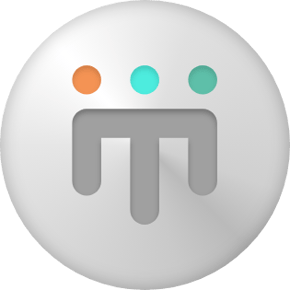From your legal department to business development reps, artificial intelligence (AI) has impacted your organisation's operations, and HR is no exception.

It redefines how organisations operate by making administrative heavy tasks easier to manage. But with great power comes great responsibilities.

And for all its benefits, it’s not without its risk. AI presents a complex web of challenges, from ethical concerns to implicit biases that could be baked into the technology. So what’s the sense on the ground? How is HR going to integrate AI into organisations?
New research by Trailant shows that 90% of organisations embrace AI, but 40% of employees say their organisation lacks policy on using AI responsibly and ethically. Additionally, 50% of employees believe HR is responsible for developing guidelines around the responsible use of AI, but only 20% have received AI training.
So, HR professionals are not communicating with employees about proper AI use, and they need to address rising concerns from employees as generative AI technologies gain momentum.

HR departments play a crucial role in building digital equity and should help shape workplace policies to provide employees with clear guidance on AI use.
Address risk concerns
HR has already begun integrating AI in a number of ways, eliminating time consuming tasks and streamlining workflows. Because cutting out administrative HR allows you to spend more time doing strategic HR.
But while AI is doing wonders for streamlining time consuming tasks, it has its pitfalls.

Data Privacy and Security
AI systems process large amounts of personal information, raising concerns about how this data is stored, who has access to it, and how it's protected from breaches or unauthorised use. No organisation wants to be the headline of the next big data breach scandal like Optus or Latitude.
-Dec-17-2024-10-59-27-5448-PM.webp?width=480&height=400&name=giphy%20(1)-Dec-17-2024-10-59-27-5448-PM.webp)
Privacy Act Compliance
Legislation like the Privacy Act 1988 is a moving target in Australia. It sets strict guidelines on how personal data should be managed. Organisations must ensure they comply with these regulations. Non-compliance can lead to legal penalties and damage to your company's reputation.
AI Bias
If the data fed into AI systems has biases, the outcomes will reflect those biases because AI systems learn from the data they're given.
This can result in unfair hiring practices, discrimination, or unequal opportunities within the workplace. It's crucial to monitor and adjust AI systems to prevent ethical missteps—basically the opposite of what HR stands for—being for the people.
-Dec-17-2024-10-59-50-1957-PM.webp?width=480&height=258&name=giphy%20(2)-Dec-17-2024-10-59-50-1957-PM.webp)
Eventually, organisations will need to respond to these obligations by creating AI policies, but organisations can start now by establishing transparency and acceptable use policies. Train your employees on these guidelines and keep everyone in the loop as things change.
So what’s the best way to get started on building AI policy?
Create AI policy
Conduct a Risk Assessment
Start by conducting a risk assessment and develop an AI policy program based on your organisation's needs.
Evaluate how AI systems might expose your organisation to cyber threats. Determine if employees know how these threats can impact your organisation, and ensure that any AI tools you use meet stringent security standards to protect sensitive employee data.
Then assess employees' ability to use AI effectively. Do they have the necessary skills, or will they need training to get up to speed? You’ll also need to work with your legal department to ensure employees comply with the Privacy Act 1988.

Develop policy
Once you’ve had a good lay of the land and identified the risks, the next step is to develop the policy by following these steps:
Engage designers—a dense policy document isn't going to capture anyone's attention. Work with them to create engaging, easy-to-read materials. Visual aids, infographics, and clear formatting can make a big difference in how the policy is received.
Inform stakeholders—clearly communicate how your organisation uses AI to employees, customers, and other stakeholders. Transparency builds trust and demystifies the technology.
Outline the acceptable use—clearly and define what constitutes appropriate and inappropriate use of AI within your organisation. Set clear guidelines to prevent misuse by employees.
Include training programs—to ensure all employees understand the AI tools they're using. This boosts confidence and promotes responsible use.
Establish reporting mechanisms—create easy-to-use channels for employees to report any issues or misuse of AI systems. Encourage a culture where speaking up is welcomed.
-3.webp?width=480&height=400&name=giphy%20(4)-3.webp)
Integrate policy
Once you’ve developed the policy, the next step is to integrate it into your organisation.
Share the policy widely on your intranet. Work with IT to share it and use emails, team meetings, and your intranet to ensure everyone is aware of the new guidelines. Continue to collaborate with IT to implement the technical aspects of the policy. It’s important to know that the tools are securely deployed and maintained.
Keep the conversation going with employees, regularly check dashboards, date employees on any changes, and remind them of the available resources.
HR professionals stand at the intersection of AI’s potential and risks. They are vital to digital equity, ensuring all employees have access to the resources and knowledge needed to thrive in an AI-driven environment.

